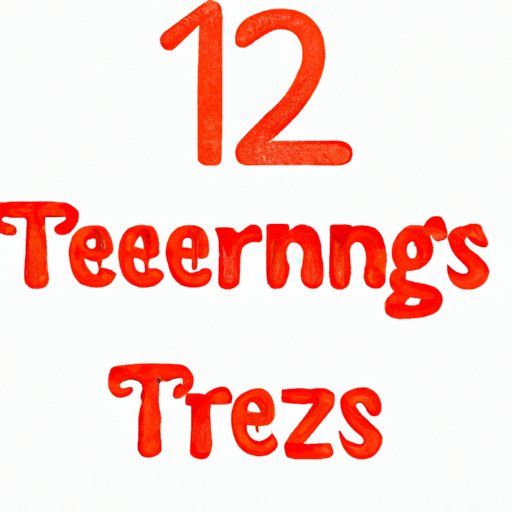I. Introduction
Have you ever played 21 questions? It’s a classic game that has been popular for years as a fun way to get to know people. Whether it’s at a party, a networking event, or even on a first date, 21 questions can be an effective icebreaker and relationship-building tool. The purpose of this article is to provide you with a comprehensive guide to playing 21 questions, including basic rules, twists and variations, and expert tips for making the game more interesting and engaging.
II. A Step-by-Step Guide to Playing 21 Questions
The basic rules of 21 questions are simple: one person thinks of a person, place, or thing, and the other players take turns asking yes or no questions to try and guess what it is. The game continues until either someone guesses the answer or all 21 questions are asked.
When playing 21 questions, it’s important to come up with good questions that will help you narrow down the possibilities and keep the game flowing. Some tips for creating good questions include:
- Start broad and get more specific as you go
- Ask questions that can be answered with a yes or no
- Only ask one question at a time
- Establish ground rules and time limits to keep the game moving
You can also determine a winner or keep score during the game by giving each player a point for each question they ask that is answered with a yes. The player with the most points at the end of the game is the winner.
III. 10 Unique Twists to the Game of 21 Questions
If you’re looking for a way to make 21 questions more interesting and engaging, there are a number of unique variations you can try. Some examples include:
- Using specific categories, such as food, movies, or travel
- Allowing players to choose their own questions or topics
- Playing with more than two players
- Setting a time limit for each question
- Adding a dare or punishment for guessing incorrectly
- Playing with a theme, such as celebrities or historical figures
- Asking questions in rounds, with each round getting progressively harder
- Playing the game backwards, where the answer is revealed first and players ask questions to try and guess the question that was asked
- Playing with a twist ending, where the answer is unexpected or surprising
- Playing with truth or dare elements, where players have to reveal something personal about themselves if they guess incorrectly
Each of these twists can make the game more interesting and fun, while also providing new opportunities for learning about the other players.
IV. Playing 21 Questions as an Icebreaker
If you’re looking for a way to break the ice in social situations, 21 questions can be an effective tool. The game can help you get to know someone new or help others get to know each other in a low-pressure, playful way. To use 21 questions as an icebreaker, it’s important to keep the game light and casual and avoid asking overly personal or sensitive questions.
Some tips for playing 21 questions as an icebreaker include:
- Start with easy questions and work your way up to more interesting or complex ones
- Avoid questions that may be too personal or sensitive
- Use the game as a way to find common interests or experiences between players
- Keep the tone of the game light and playful
V. Expert Tips for Playing 21 Questions
To get a deeper understanding of how to play 21 questions effectively, we spoke with an expert in the game. Their advice includes:
- Asking thought-provoking questions that challenge the other players and encourage conversation
- Reading body language to get a sense of how the other players are feeling and responding to the questions
- Identifying when someone is bluffing and using that to your advantage in the game
- Experimenting with different twists and variations to keep the game fresh and interesting
Applying these advanced strategies can take your 21 questions game to the next level and help you become a master of the game.
VI. Playing 21 Questions with a Partner
Finally, 21 questions can also be used as a tool for relationship-building, particularly between partners. The game can help couples get to know each other on a deeper level and encourage honesty and vulnerability. Some tips for playing 21 questions with a partner include:
- Asking open-ended questions that allow for long, thoughtful answers
- Being honest and vulnerable in your own answers to create a safe space for sharing
- Avoiding questions that may cause conflict or tension
- Using the game as a way to explore new topics or areas of interest in your relationship
Playing 21 questions with a partner can be a powerful way to strengthen communication, build intimacy, and deepen your connection.
VII. Conclusion
Whether you’re looking for a fun icebreaker or a way to deepen your relationships, 21 questions is a versatile, engaging game that can be used in a variety of settings. By following these tips and strategies, you can become a skilled player of the game and enjoy all the benefits it has to offer.
If you’re interested in learning more about playing 21 questions and exploring new twists and variations on the game, there are plenty of resources available online and in person. Try playing the game with different groups of people to see how it can be adapted to different settings and social situations.
